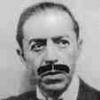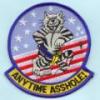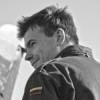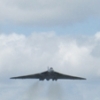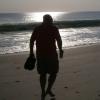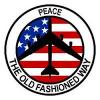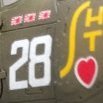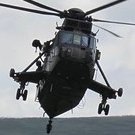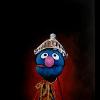Search the Community
Showing results for tags 'meng'.
-
A39 TORTOISE BRITISH HEAVY ASSAULT TANK Meng 1/35 Hi Guys, I built Meng's fantastic Tortoise in June 2014. It was a great kit to work on from beginning to end and Meng have definitely become one of my favorite manufacturers. A few modifications were made to the kit to bring it closer to how a production model may have appeared. The stowage bundle on the back was made from scraps of balsa stuck together and covered with lead foil. I use hairspray for the winter whitewash and the figure came from a MiniArt set. Hope you enjoy the shots (new photos on page 2) And a couple of wip shots to finish Thanks for looking Andy
- 44 replies
-
- 29
-

-
Another Bradley, but not in the same league as Gremlin's recent effort. I wasn't sure whether I'd bother putting this up and considered waiting until I'd finished and then gently prod it round the door with a long stick and leave quietly hoping that nobody would notice. Before this I'd just finished the Meng Abrams which, in my opinion, is a bit of a dog. I wasn't sure if this was going to be the same in which case I'd probably not bother and kick it into the stash somewhere but I thought it would be fair to give Meng a second chance. I'm happy to report that apart from a couple of minor niggles its going together rather well with the parts fitting like they belong to the same kit. Here's the start. There's an M113 from Tamiya on the bench as well as the Bradley hull on its back waving its legs in the air. The Tamiya kit was an old moulding with a couple of extra sprue thrown in which are basically bergens, ammo and jerry cans and a dog to hang around the external parts of the vehicle. Although the Bradley has an interior I'm not sure how much will be visible once I'm finished. Thought I'd start on the wheely bits first as well as the track assembly. The wheels have separate tyres which I thought was to make painting easier (see later). Being Meng the fit between the road wheel and tyre is so tight that no adhesive was necessary. They're on for good! I've seen various negative comments about the tracks but with me being cheap I thought I'd give them a go. I can always bin them later if it goes wrong and order up some of the ones that Gremlin used in his build. Thankfully there are enough links in the bag to compensate for the ones that don't fit or are too loose. I might need to glue a few links before this is over just for some additional strength. Time to get them into paint along with the rubbers from the M113. As most of the M113 track is hidden under the side skirts the rubbers will be adequate enough. My choice of track may yet be my undoing. Here's the start to the hull interior. Time to add some grease an overall wear and tear before I go any further. Next steps is the engine, oh, one has just been delivered. Of course it wouldn't be one of my models if I hadn't screwed up somewhere. Thought I'd completed the wheel assemblies but that wasn't the case. At the bottom of the box was a piece of brass that the helpful people at Meng thoughtfully included for use as a mask for defining the extent of the rubber. Pity they didn't mention this in the instructions which were rather unclear about the extend of the rubber. I did have my reservations when I was putting them together. Oh well back to wheel painting. I've now discovered that there is a considerable warp on the lower half of the hull. With the back plate and some tensioning I should be able to fix it. I ran into a similar problem with the Meng Cougar when closing it up. This time I'll make sure the hull fits together before fitting the interior. That way I should be able to use the necessary clamps without damaging parts. I'd say with Meng it pays to build sub assemblies, continually checking for fit, before discovering that that serious fettling is required once everything has been glued down.
- 86 replies
-
- 10
-

-
Hello all, Here is a project that i've been planning for a while and quite a rare occurrence for me to be building 3 non-aircraft models one after the other! Based around Meng's 1/35 Pickup truck, the diorama will be based around a Tier 1 Special Missions Unit (Delta or Devgru) setting up a sniping/observation position in the Shahi-Kot valley, in early 2002. Kit: Extras: And some bits from this tub of assortments: Just need to find a suitable base. Looking forward to developing this one as i've had a long held interest in Special Operations and I think those in the early years of the War On Terror are fascinating. Dave
-
Good day gents, I was thinking on getting back to the “dark side” (modelling). So for the first model I’ve picked up Meng F-35A. I would like to build AF-01 the very first one Lightning delivered to unit. However I’m a bit struggling finding the 1:48 decals. Any suggestions? Also maybe anyone of You knows the best way to replicate those rectangular test markings along weapon pylons and fuselage? Or maybe someone of You knows a good walkaround? Any suggestions regarding finishing colours? Any information would be a great help! I’m looking forward to hear from You guys! Kind regards, Edgar
-
I built these soon after Meng released them. Two-in-a-box, they were easy to build and fun to paint, especially since there were no accuracy concerns... I added a bit of cockpit detail but that's about all.
- 18 replies
-
- 32
-

-
Hello all, Here is my recently finished diorama based around the 1/35 Meng Pickup truck. Entitled 'Hunting' the scene depicts an American Tier 1 Special Missions Unit (Army Delta Force or Navy DEVGRU) in a sniping/observation position, somewhere in Afghanistan in early 2002. I added some extra resin storage to the truck, along with some Legend AT4 launchers, a ProArt tac sat antennae, a radio in the cab (can barely see it) and some other small bits and pieces. The sniper team are Legend figures, the squatting figure is an unknown brand of ebay, the .50cal rifle is from the Meng kit and the M4s/MK11 are from Trumpeter. The build thread is here Thanks for looking. Dave
-
Hi folks, Here is my completed Meng Whippet Tank. Please let me know what you think of the weathering. I think I may have gone overboard a bit, but somebody else thought it was understated. Constructive criticisms are very welcomed. IMG_3434 by Mark Wakelin, on Flickr IMG_3441 by Mark Wakelin, on Flickr IMG_3440 by Mark Wakelin, on Flickr IMG_3439 by Mark Wakelin, on Flickr IMG_3438 by Mark Wakelin, on Flickr IMG_3437 by Mark Wakelin, on Flickr IMG_3436 by Mark Wakelin, on Flickr IMG_3435 by Mark Wakelin, on Flickr IMG_3432 by Mark Wakelin, on Flickr
- 17 replies
-
- 19
-

-
US M911 C-HET (8x6) & M747 Heavy Equipment Semi-Trailer (SS013) 1:35 Meng Model Any army requires transporters for their heavy equipment, and in the US this is abbreviated to HET, which stands for Heavy Equipment Transport, so you hear the use of the phrase applied to a number of heavy-haulers. Tank transport is particularly heavy, with your average M1 Abrams weighing in around 60 tons. The M911 tractor unit was a product of the 70s and was initially paired with a trailer that had previously been used with the M746 that the M911 replaced. During the Gulf War the M911 saw extensive use pulling Abrams tanks from battle to battle, which exposed weaknesses in the tractor's mechanicals that led to its replacement by the M1070, from the same Oshkosh stable. The easiest way of telling them apart is the more streamlined grille of the M1070, versus the square shape of the M911. The Kit This is a completely new tooling from Meng, and given their reputation for detail this is a god thing. It arrives in a large box that possibly could have stood a slightly thicker cardboard stock, and once you open it up, you're greeted by a pretty comprehensive package: 15 sprues in sand coloured styrene 1 sprue in clear styrene 2 frets of Photo-Etch (PE) brass 2 sprues of poly-caps 13 flexible styrene tractor tyres (large) 17 flexible styrene semi-trailer tyres (small) 6 flexible styrene pneumatic shock-absorbers 1 sheet of reflective foil for mirrors 1 sheet of pre-cut masks 4 metal axles (long) 2 metal axles (short) 1 red insulated wire 1 blue insulated wire 2 braided cable There's still a little room in the box for stashing any aftermarket you might buy, but it's a well-rounded complement. The detail is of course excellent throughout, and there are lots of clever techniques used in the build, as well as the moulding of the kit. Construction starts with the ladder chassis of the tractor, which consists of two outer rails/i-beams onto which the cross-members and transmission equipment are added, along with a number of tanks for the pneumatic systems. Once the frame becomes a ladder, you can use the jig that is built into the runners of sprue C (see below), but go easy with the glue if you're not taking off the parts first, as you might accidentally drip and mar the surface of them. A chunky-looking transmission box and short drive-shaft are fitted at about the half-way point, with the seriously large leaf-springs and their twin axles added next, linked by more drive-shafts, as every wheel on the tractor is driven. The front springs are only slightly less beefy, and these are also joined by their axle and drive-shaft in due course. In between the front axle and the twin rear axles is a pneumatically-operated fourth axle that can be raised or lowered to spread the weight further. This is referred to as the Pusher Axle, and uses the included flexible shock-absorbers during construction. At this point you choose whether to have this up or down, as the construction process is different for each option. Steering gear for the front axle plus a host of ancillaries throughout the other axles are added, followed by the lower part of the V8 92TA-90 diesel powered engine, and its transmission. If the lower half isn't good enough for you because you wanted to open up the hood/bonnet, then Meng also have you covered with their resin upgrade set SPS-055 (reviewed here), which unsurprisingly gives you the full engine and CLBT-150 transmission. In common with almost everything about this kit, the fuel tanks are massive, with one large one on one side, and a smaller one on the other – a description that can also be applied to the stowage boxes that hang off the ladder chassis. Now for some wheels! Each hub is constructed from the main hub, separate flange, and a poly-cap hidden behind a central boss, that is then (once dry and possibly painted) fitted to the flexible styrene tyre, which should be of the large variety, as the smaller tyres are for the trailer wheels. The rear axles have double tyres, which are constructed differently, with two poly-caps hidden between the two inner faces of the hub. The pusher and the front axles are single tyres, and all wheels can be removed at will thanks to the inclusion of the poly-caps, which makes painting and weathering much easier. The winch station is built up next on a trapezoid base that installs over the front-most of the twin rear axles, and has a pair of cable drums that have the braided cable wound around them during assembly. A plastic eyelet is added to the end of the cable, and the twin motors and control wires are fitted pointing aft. The hydraulics box sits forward of the cable drums, which doubles as a spare tyre bracket, and has a small drive-shaft to take off power from the transmission, as well as pipes and corrugates hoses to transfer the fluid. The winch control box fits between these two assemblies with lots of old-fashioned levers sat atop the box, with a PE front panel, and some decals for stencils near the controls. Turning briefly to the engine again, the large front-mounted radiator and side-mounted air intake and filter are fitted first, and then left while the 5th wheel/9th wheel and its guide plates are fitted to the rear. A pair of pneumatic hoses are wound round a narrow rod to give the impression of the flexible connectors that are typically fitted for quick-disconnect of trailers, with a scrap diagram showing where they should be routed. The large branded mudguards are glued to the ends of the i-beams, and on the side the spare wheel is sited on the bracket on the hydraulic tank. The cab is next, and operations begin with the front bulkhead/firewall, which has the windscreen aperture moulded-in, to which you fit the clear part. There are two quarter-lights that also have glazing panels, and inside you fit the dashboard with decals for the dials and sun visors on each side. The driver gets a separate seat, while the other two crew have to share a similarly upholstered bench seat, which fits into the rear part of the cab, with moulded-in anti-slip ribbing to the floor, which angles up at the front to accept the pedal box, the steering column and other drive controls, which a few nice decals for stencils here and there. At the rear there are three small rear glazing panels added, then the front bulkhead is mated to the rear to form the major part of the cab, to which the support structure is added under the floor. The doors are made up of inner and outer skins that sandwich the clear part between them, and inside a couple of stencils can be added plus the handles and window winders. The right door also has a glazed "cat flap" in the bottom, presumably for judging kerbs etc. The big cowling at the front of the cab is a single part if you ignore the badge at the front of the top, and to the very front you have the radiator grille, which is PE, and needs to be folded. Fret not however, as Meng have thoughtfully provided a two-part jig that will do all the heavy-lifting for you. You position the flat PE grille on the bottom part of the jig, with a lug in each corner locating in corresponding grille holes, then you apply the top part and press down firmly and evenly. This slides down on four turrets so that it doesn't go out of line, and the edges apply pressure to the grille, resulting in nicely curved corners. You mate the finished part to the cowling with some super glue and then add the doors (open or closed) and the roof, remembering to paint it before you do. Another jig is supplied to roll the exhaust's perforated heat-shield, which is then glued on around the styrene muffler, with its feeder pipe leading into the engine cowling past the cab door. With a couple of vents and lights for the roof you can glue the cab onto the chassis, then add the protected bull-bars that also incorporate the front light clusters. The wing mirrors are attached to a frame that goes over the roof, with braces against the cab sides, another pair that are separate, and most interestingly, a set of self-adhesive mirror stickers that you can apply after completion to give a realistic reflection to the viewer. Air horns, rear lamps, towing shackles and another mirror on the front of the engine cowling with its own foil sticker finish off the tractor unit. The semi-trailer is begun by putting together the frame that sits at the rear between the main I-beams of the trailer's chassis, supporting the rear axles. A number of cross-beams are fitted before the undersurface of the trailer can be installed, which has the goose-neck and fifth-wheel attachment point moulded-in, which is strengthened by a sub-assembly of beams, while fillets are added along the length of the chassis to provide additional width to the flat-bed. A stowage are is fabricated on the top of the A-frame by adding a number of panels, with pioneer tools fitted to the exterior, and at the rear, the aft bulkhead is made up, with a large pulley attached inside, and a pair of outrigger beams back at the front of the bed. The flat-bed is fitted with stiffeners along its edges before attachment, and an additional section is then fitted to the goose-neck and A-frame, then the assembly is flipped over to install a number of distinctly Toblerone-like parts under the bed. More parts are fitted to the edges, and a set of large air tanks are made up and fitted into the forward underside of the trailer, with a scrap diagram showing their correct location and orientation. Bump-stops and flexible pneumatic shock absorbers are installed under the bed in anticipation of the rear axle pair, which is made up from straight axles with brakes and massive supports, dropping onto the shock-absorbers to give it some flex. The second pair of axles are fitted to a single-point rocker and clipped around short beams that were glued in place earlier, and have hubs attached to each end, with all axles then getting a pair of wheels apiece, using the same pair of poly-caps trapped between the hubs. The flexible wheels slip over the hubs, and before long you have 16 (more) wheels on your wagon. The trailer's front steadies are able to be fitted extended or retracted by varying the point at which you clip them into the frame parts, which are all PE, so may not stand up to constant changing of stance. It would be wise to pick up or down and stick with it to avoid disappointment when they break from fatigue. Fitting the skids to the pivot point finishes those off, and then attention turns back to the rear for the assembly and fitting of the big loading ramps. Each one is a mirror image, so uses some different parts, so take care to keep track of which is left and right, although it should become obvious when it comes to fitting them, as they'll only fit one way. They are secured in transit by chains, which are styrene in this case, and the diagram shows the correct hooking point for these delicate parts, and some may wish to replace the plastic with real micro-chain which is available in suitable sizes online. The spare wheel and various "greeblies" are fitted to the A-frame along with some hand-holds, with load handling equipment such as stoppers, jack pads, spacers and even a jack fitted into the spaces between the frames. Linking the trailer to the fifth-wheel socket and connecting up the two curly "pneumatic" wires completes the build phase. Markings Despite this being a big model, it has a teeny-tiny decal sheet, mainly because AFVs and softskins seldom have many markings other than number plate, unit and theatre markings, plus the occasional stencil. You get two options from the box, one in generic NATO tricolour green/brown/black camo, the other in desert sand with markings for Operation Desert Storm in Iraq, January 1991. Colour call-outs are in AK Interactive colours, and the schemes are shown in five-view colour profiles printed on glossy paper, separately from the main instructions. Conclusion Awesome! It's not a pocket-money kit by any stretch of the imagination, but the effort, attention to detail and care that has gone into the design makes it a worthy addition to your stash. Even if you don't do the obvious this and plonk an Abrams on top, you've still got a very impressive model. It's a shame Meng haven't yet done an early Abrams that would be suitable for this period, but their M1A2 SEP with TUSK I/II is still worth drooling over as an aside. Just perfect for that long narrow space in your cabinet. Very highly recommended. Review sample courtesy of
-

Meng 8V-92TA-90 Diesel Engine & CLBT-150 Transmission (SPS-055) 1:35
Mike posted a topic in Aftermarket
8V-92TA-90 Diesel Engine & CLBT-150 Transmission (SPS-055) 1:35 Meng Model If you've been reading my review of the new Meng M911 C-HET with M747 Semi-Trailer, (and if not, why not?) you'll know that the kit supplies just the lower portion of the engine and transmission, which is all that's visible with the hood/bonnet down. That'll do just fine for a lot of folks, but if you want to throw open the covers and show off the engine, this resin set will be of great interest. Arriving in a small and unassuming card box with a line-drawn diagram of the engine and its catchy title on a sticker affixed to the top, you'll find three bubble-wrap bags inside. Within those are the parts that go to make up a complete (apart from wiring) engine to replace the kit parts, with detail that you couldn't hope to achieve in styrene. There are fifteen parts in dark grey resin, and each part is cast on a separate block, with sensibly petite attachment gates that help to minimise clean-up. There aren't any instructions in the box however, but the isometric drawing on the lid should give you plenty of clues on how it builds up, but you can see a couple of 3D renders that should end any doubts here, or just by scrolling down. Still, it would have been nice to have instructions, and those pics took a little tracking down. As to painting of the engine, you'll have to do some research and track down suitable pictures, which will also help with the weathering, showing where dirt, oil and grime accumulate on these big units. Clean-up should be a doddle, but wash the parts either in an ultrasonic cleaner with a suitable cleaning solution, or warm soapy water, remembering that too much heat will render the resin flexible again and could ruin your engine parts. Washing the parts in warm water will also improve the adhesion of paint by removing any remaining moulding release agent on the parts. Use CA to attach the parts together, and as usual with resin, take the precaution of wearing a mask when cutting or sanding resin, as the tiny particles are harmful to your health if breathed in. Conclusion Detail is fabulous, the casting is of the highest quality, and sensible moulding blocks make the task of creating this power-pack a relative pleasure. The lack of instructions is a minor pain, but if you follow the 3D renders, there should be little room for error. Very highly recommended. Currently sold out, but check back for a restock. Review sample courtesy of -
Hi all, While I'm usually a wings and rotors man, I decided to try my hand at an armour kit for the M3 M4 Medium Tank GB here. So to ease myself into it, I went for one of the Meng Toon tanks - very small kit so here's a link to the very small build thread ! And if that wasn't enough modelling heresy, I finished it as an Oddball Sherman from Kelly's Heroes. (well, with my own surname being Moriarty, I guess I had to!) I suppose you could call it a What-the? kit of a What-if Sherman.. First time i've tried weathering a tank and mostly homemade bits for the stowage/loudspeaker/gun tube. The crewman is from Tamiya, donated by a fellow modeller. Meng M4A1 Toon Oddball_Sherman_Done by Dermot Moriarty, on Flickr Meng M4A1 Toon Oddball_Sherman_Done (7) by Dermot Moriarty, on Flickr Meng M4A1 Toon Oddball_Sherman_Done (5) by Dermot Moriarty, on Flickr Meng M4A1 Toon Oddball_Sherman_Done (4) by Dermot Moriarty, on Flickr Meng M4A1 Toon Oddball_Sherman_Done (8) by Dermot Moriarty, on Flickr Will finish a small base for it shortly too. Thanks for looking and comments welcomed. Woof woof! Dermot
-
Good afternoon everyone! While I'm waiting for a spot of sunshine to photograph the recently completed Airfix Victor B2, I thought I would open up this thread in preparation for starting the build. Now, I should probably begin by saying that I do have a soft spot for the F-35: it looks sleek, sharp, crisp and its capabilities (from what I gather) are exceptional despite its initial problems during testing. You might be asking, "Hang on, why on earth are you modelling an RAF F-35A when the current focus is on the F-35B and the perfectly acceptable Kitty Hawk F-35B kit is already available?" After being made aware (thanks to BM's very own Mike, for making me aware of this) of the UK's possible future intentions to purchase the F-35A in order to compliment the Fleet Air Arm F-35B's, I decided that due to the rarity of the KH kit in physical model shops and online in the UK for a decent price, and having seen a review of the newly released Meng F-35A kit, I settled on the F-35A. The kit looks jolly good with a good fit of the fuselage halves straight off the bat! The RAM strips look a tad too prominent for the scale but I'll see what I could do (if anything) to correct this, furthermore I'm slightly sceptical about the colours of the kit decals (the painting guide shows F35's in a suspiciously dark shade of grey.....). Regardless, I needed some decals to do an RAF F35 so I bought these from the fine folks at Hannants: Here are a few snaps of the kit contents: So that's it for now. With Uni starting next week I hope you will forgive me if progress is sluggish (even more so than usual ). Kind regards, Sam
-
So after getting the ok from the Sarge (thank you), I'm in with this one.. Meng M4A1 by Dermot Moriarty, on Flickr Just three sprues, two vinyl tracks and some decals Meng M4A1 contents by Dermot Moriarty, on Flickr Going to add a couple of Tamiya figures, kindly donated by club colleague and Sherman guru Pat. He also sold me the kit (cheers Pat). Tamiya crewmen by Dermot Moriarty, on Flickr I know it doesn't have a scale and looks a bit odd in this company.....but thought it might be something to have a bit of fun with! Cheers, Dermot
-
Here it is, all done. Based on a 70's TV show about two LA County Sheriff's deputies, working as rescue paramedics on a Ford Bronco, whose callsign was "2-40 Robert". In real life the vehicle works out of East LA and is crewed by two paramedic trained deputies, so this is the idea updated. Basic kit is by Meng and went together well, the lightbar is from www.policecarmodels.com in the US and the decals are from JBOT in Canada, they are superb but very thin so although they go down well there is very little room for error or messing about. Plus a few bits and bobs from the spares boxes. Brush painted using Humbrol enamels and finished with Winsor and Newton Acrylic varnishes. There are a couple of mistakes and a couple of things I would do differently next time, but all in all I'm quite happy with this. F350 - 2 by phil da greek, on Flickr F350-30 by phil da greek, on Flickr F350-33 by phil da greek, on Flickr F350-28 by phil da greek, on Flickr F350-32 by phil da greek, on Flickr F350-31 by phil da greek, on Flickr F350-27 by phil da greek, on Flickr F350-29 by phil da greek, on Flickr Thanks for looking.
-
Renault FT in 1/35 scale by Meng-Model. The only changes to the kit are the use of metal chain and tool straps made with Tamiya tape to replace the photo etch ones provided in the kit. Finished in Vallejo Model Air (ugh...) and Tamiya acrylics; AK Interactive and Ammo of Mig enamels; and Ammo of Mig and Secret Weapon Miniatures pigments. As a whole, I think this kit turned out pretty good and I would place it as one of my better kits, which is funny because I started this kit almost a year ago and put it aside after I painted the camouflage because I was really unhappy with how it turned out. That being said, the strengths are the washes, oil paint rendering, the chipping, and the metal chain on the unditching tail. The weakness are the pigment effects and the camo paint. I'm not satisfied with the dirt effects (mainly on the tracks themselves) even though I think it's a step up from my previous efforts. I decided against using the kit-supplied base, as cool as it is, for a couple of reasons. It's a little too dramatic for my tastes and it's going to take more work than I'm willing to do to make it good. I'll probably swing by the craft store and grab a small wood plaque or picture frame and use it to build a little base to have the tank look like it's trundling down a dirt road on the Western Front. Comments and criticism is welcomed as always!
- 14 replies
-
- 13
-

-
Hello everybody. The Caterpillar D9 heavy bulldozer in scale 1:35. Based on the fantastic kit of the armored Bulldozer of Meng Models. Several parts replaced, made new or modified. Plus metal tracks, etched parts, new decals, lights, .... I hope that you like it! Cheers Micha
- 12 replies
-
- 16
-

-
- caterpillar
- bulldozer
-
(and 1 more)
Tagged with:
-
Last year I purchased the meng king tiger and full interior set. While I was preparing for the build I noticed that I couldn't find many sites showing a step by step guide in construction (I have recently found out that there are many and I just wasn't looking), so I have decided to log the build on this feed. I am aiming just to build the kit straight out of the box. I hope everyone enjoys my work. I will post more pictures as and when I manage to get bench time.
-
My first completed model of 2018! And it's not even December! Here is the very fun and very little Meng Kids Lancaster. Obviously inspired by the classic egg planes of the past. This is more of a cartoony or "chibi" style. The inspiration for this build once again came from Andy Moore who has built a couple of these in the past. The model is essentially OOB. The tires supplied are have very square shoulders so those were sanded to round them off. The bottom of each tire was also sanded to give the impression of weight. The three turrets come molded completely clear so I masked and sprayed on some simplified framing. The guns were drilled out and the decals came from Kits-World. I used a mix of 1/72 and 1/144 to fit the non scale nature of this model. There was a little silvering on the larger decals with clear sections but I'm sure that was more my fault as the decals seem to be of very high quality. The decals I used were only fractionally bigger than the markings provided in the kit. But due to the tiny size of the compressed fuselage there was VERY little room for decals of any kind! The aircraft serial number had to be located underneath the horizontal stabilizers. In reality, Ropey (KB772) was a Lancaster Mk.X operated by 419 Squadron, Royal Canadian Air Force. She was built in Canada and flew out of RAF Middleton St George. She survived the war and was brought back to Canada in anticipation of being used in the Pacific. But the war ended with Ropey in Canada and there KB772 would remain until being scrapped in 1947. The bombs were painted OD and given some non historically correct yellow stripes just to add a little visual interest. It really is a tiny little thing. This was a lot of fun and I would absolutely build another. Thanks for looking! -matt
- 11 replies
-
- 35
-

-
Anyone remember the programme? In the late 70's early 80's, created by the same guy who created "CHiPs" and hot on the heels of the classic "Emergency!" 240 Robert was the callsign of the Bronco used by two Los Angeles County Sheriff's deputies who were also search and rescue paramedics. The programme focused on this aspect rather than the policing role, it only lasted 15 episodes and one of the main characters was played by Mark Harmon, later of NCIS fame. As a young kid in West Yorkshire, I loved it, I think it was on ITV on a Saturday or Sunday afternoon. Of course now through the magic of the internet you can research and revisit all these things that you only vaguely remember. The modern LASD still operates these search and rescue teams and they use a wide range of vehicles, so this build will be a little "what if" but is based strongly on the real thing. I've had the Meng kit for quite a long time and had played with the idea of doing this but lacked any suitable decals, however with JBOT decals making a reappearance I decided now was the time. The kit will be used pretty much out of the box, just a little scratch building and alteration of the centre console to turn it into a police vehicle, then the scratching of a box to sit on the truck bed. The decals are here and look excellent and the light bar is coming from police car models in the US and other little interesting bits from the spares box and Kit Form Services. So a few pictures. F350 - 2 by phil da greek, on Flickr F350 - 3 by phil da greek, on Flickr Big box full of stuff, a lot of it is to build a very realistic engine, not for me as the bonnet / hood will be down, just enough so if anyone views it from the right angle there is something there. The instructions are good. Nice & clear, making it obvious where bits need to go. F350 - 4 by phil da greek, on Flickr F350 - 5 by phil da greek, on Flickr Centre console as supplied and then as butchered and then an idea of where we're going with it. F350 - 6 by phil da greek, on Flickr F350 - 7 by phil da greek, on Flickr F350 - 8 by phil da greek, on Flickr So far so good. The chassis is built and being painted up, it went together very well with almost no need to "fettle", all in all the kit goes together well with no big gaps to fill (so far). Only two complaints really, first the nasty rubber tyres, I've had no success finding resin ones (anybody got any leads? 35mm diameter, probably the same size as 1/24 Land Rovers) and the second were the truly stunning ejection marks in the crew cab floor that took some serious fixing. Feel free to join in but a word of warning, if you're a F350 or LA County Sheriff expert, you may want to go somewhere else. Feel free to count my rivets but don't expect me to thank you. Laters.
-
German Medium Tank Sd.Kfz.171 Panther Ausf.A late (TS-035) 1:35 Meng Model The Panther was Nazi Germany's answer to the surprise appearance of the Russian T-34 after they finally reacted to the invasion that was Operation Barbarosa. Although the project had been in gestation some time before, they took some design cues from the T-34 in the shape of the sloped armour, resulting in the Panther that was intended to fill the gap between the Panzer.IV and the (then) new Panzer VI Tiger. It was eventually supposed to replace both the Pz.IV and the earlier Pz.III that was really showing its age, but in reality it often fought alongside the Panzer IV. It was planned as a lighter, more manoeuvrable tank than the Tiger, and was fitted with a high velocity gun from the outset, which gave it enormous penetrating power that was only equalled by the British 17-pounder fitted to the Sherman to make the Firefly. The sloped frontal armour gave it an increased effective armour thickness, but this was not so true of the side armour, which was comparatively weak, and this area became the preferred target of engaging allied tanks, especially in urban combat where this was a telling issue. Like most German WWII tanks it was complex to produce, so suffered in terms of volume produced, and this led to it being rushed into service with quite a tick-list of things still to sort out. Later production solved most of these initial gremlins, but loses in the interim were high with many being abandoned after failing during combat. Curiously, the Ausf.D was the first to enter production, with the Ausf.A following later in 1943, replacing attrition of the less reliable Ausf.Ds until they themselves were superseded by the Ausf.G, which became the final major variant with increased ammo storage, simplified design to ease production, and further improvements to reliability, although this was never fully cured with a high rate of attrition due to mechanical issues, some of which resulted in catastrophic fires. A Panther II was planned, which retained much of the look of the original Panther, while improving armour and suspension. They got as far as creating a pair of prototypes before the war ended, and a destroyed but still substantial chunk of the Schmallturm (smaller turret) can be seen at Bovington. The Kit This is a complete new tooling from our friends at Meng, who never cease to impress with their products. Their use of CAD for design is peerless, and they have mastered it to such an extent that their depiction of organic or random textures appear totally natural. They also use advanced moulding techniques such as slide-moulding, and include parts in the box that were once considered aftermarket (and still are) by some producers. Their recent kits have been modular, allowing the modeller to pick and choose whether to buy the base kit, add an interior, working track system, Zimmerit or all of the above depending on their level of interest, skill level or bank balance. The box is typical Meng, with an attractive painting of a Zimmerit encrusted Panther on the front, with profiles, colour codes and information on the sides. Inside are (for the most part) individually bagged sprues to minimise chaffing during transport, and plenty of parts. There are seven sprues in a Primer Red styrene, three sprues in black for the tracks, one in clear, plus two frets of Photo-Etch (PE) brass, one of which being nickel plated, a decal sheet, two lengths of twisted wire for the tow ropes, a turned aluminium barrel, two strips of poly-caps, instruction booklet, and a Z-fold painting and markings guide. Very nice. First impressions are excellent. The parts breakdown is sensible, whilst also somehow managing to be a bit cool and clever. The detail is superb, with the rolled steel surface of the thickly armoured panels so nice that it would almost be a shame to slap Zimmerit on it. The casting texture on parts like the mantlet (of which there are two) is well done, if a shade too neat, and the wooden texture on the unditching block is also worth a squint. The instructions are typical Meng, offering crisp isometric views of the build with an uncluttered style that still manages to get the point across. You are informed that there are seven decal options at the beginning, and advised that this will affect your choice of parts, so you should choose now. At this point, it is highly likely that you might reach for your wallet to pick up just another Meng Panther, as the options are all so interesting, although some might test your camouflage skills. Construction begins with the road wheels, all of which have a poly-cap between the two dished wheels. The three-part drive sprockets and four-part idler wheels also have poly-caps at their heart, so that wheels can be added and removed throughout the build. In order to mount them however, you need a lower hull, so this is next, being made up from two sides and one floor part, with two bracing parts holding everything rigid inside. If you're building yours with the Suspension Kit (SPS-049), you'll diverge from the instructions here and come back later once you've finished adding all the working metal torsion bars and workable track links. Go on – get your wallet out and I'll meet you back here when you're done, but just in case you're not convinced yet, read the paragraph under this one. If you're sticking with the base kit, the rear bulkhead, final drive housing and the many suspension arms are inserted into the hull sides, and for some reason the towing shackles are also clipped onto the torch-cut ends of the side plates at this stage. The pre-prepared road wheels, idlers and drive sprockets are all slotted into place on the stub-axles, and an optional two hook can be fitted under the rear of the vehicle, directly below the jack, which is also installed now between the armoured exhausts, which gives you a choice of two identical single-tube units, or a triple-tubed port-side unit that resembles a pair of bagpipes. Either side of these the distinctive stowage boxes are added, with separate tops in case you wanted to mess about with them. The tracks on the base kit are individual parts that are glued into track runs and draped around the wheels until they set up, while the aforementioned suspension set has workable links that will drape and move of their own accord, and include a huge quantity of tiny metal track pins! Meng helpfully include a jig that will allow you to make up a length of tracks at the correct slope and sag for that return run from the drive sprocket to the second road wheel, which drops in a gentle curve and would be tricky to arrange without help from the jig. Each track link is free from ejector-pin marks, and has a pair of guide-horns that you will need to glue into place. This is a manual job, so prepare your tweezers and a good album to listen to whilst you plough through this necessarily tedious part, building up 87 links per side. Each track link has six attachment points to the sprue, but the guide-horns only have one on their base, so it's swings and roundabouts. Given the level of detail visible on the external side of each link though, it is worth having those six sprue gates to ensure there is no under-shoot on the detail. A set of ice-cleats are included as an option if you are thinking of a winter scheme. The upper hull has a number of rectangular holes in the front, sides and top, with only some of them making sense initially, until you realise that the glacis and side walls are added separately to give you all that lovely tooling detail. The circular radiator vents are separate too, as is the engine hatch and the two crew hatches at the front of the tank. The crew get clear periscope blocks, while the perforated engine deck vents are covered from the inside by inserts that well-represent the radiator baths and the fan in the centre. The small wedge-shaped skirt at the rear of the sponsons are also added from separate parts, and the underside of the sponsons are closed in by two plates that sit on turrets moulded into the upper hull part, and holds them in place while you add all the brackets for the Schürzen parts, which were fitted to pre-detonate shaped charges. These nickel-plated parts are fitted later, and if scraped gently after painting should reveal some of their bright metal under the paint. The upper hull is then detailed with all the usual parts you would expect, such as the armoured periscope covers; mesh screens on the engine deck; stowage bracketry; spare track links; pioneer tools; gun cleaning kit; towing cables with plastic eyes and wire ropes; a big square profiled unditching beam with excellent wood texture; lifting lugs and so forth, after which the two halves of the hull are combined into something distinctly tank-like. The mudguards are able to be fitted in a complete or missing state, the latter achieved by using the stub parts and omitting the curved guards and their width indicator "lollipops". The turret is constructed on a sketeton framework using individual panels that are detailed up during the build. The rear has a hatch added that can be posed open or closed, front has a letterbox slot for the gun and mantlet, while the sides are undecorated until later. The gun's breech is depicted in three parts, with a pair of poly-caps linking it to the two pivot points that cap either end of the inner mantlet, which is then hidden by one or other of the two cast mantlets that are included. The barrel fits snugly into a keyed slot in the mantlet, and has a three-part flash-suppressor added to the front in styrene, plus the very stub of the coaxial machine gun fitted through from the inside of the mantlet. The Anti-Aircraft (AA) machine gun that fits to the commander's cupola is an MG34 on a simple ring-mount with a belt-feed of ammo into a cloth bag, and that is glued onto the ring after it is fitted to the top of the cupola once the clear vision blocks and hatch cover has been put in place. The completed cupola fits into the roof of the turret with a key ensuring correct alignment, then more track stowage hooks are added to the sides, and/or brackets for spare road wheels at your whim. The track parts come from the spares included with the kit, as do the spare wheels. The turret has a three-lug bayonet fitting, and the gun can be locked in place by using the supplied travel lock, which has a length of simulated chain wrapping over the top. Markings You are treated to seven markings options with this kit, some of which will require you to either purchase the Zimmerit decals I reviewed recently here, or to apply your own the old-fashioned (and sometimes messy) way. From the box you can build one of the following: No.534, 5th Company, 2nd Battalion, 5th Panzer Regiment, SS Panzer Division Wiking, Kovel, VOlyn, Ukraine, Summer 1944 No.113, 1st Battalion, 35th Panzer Regiment, 4th panzer Division, Wehrmacht, Eastern Front, Autumn 1944 No.135, 1st Battalion, 31st Panzer Regiment, 5th Panzer Division, Wehrmacht, Kowel, Poland, June 1944 No.613, 6th Company, 2nd Battalion, 5th Panzer Regiment, SS Panzer Division Wiking, Kowel, Poland, Summer 1944 Sd.Kfz.268 Befehlspanther No.96, 3rd Panzer Regiment, 2nd Panzer Division, Wehrmacht, Normandy, France, Summer 1944 No.011 Headquarters, 2nd Battalion, 5th Panzer Regiment, SS Panzer Division Wiking, Summer 1944 No.503, Panther Tank Company Under Command of Gds. Lt. Sotnikov, 8th Guards Tank Corps, Soviet Red Army, Warsaw, Poland, August 1944 Decals are printed in China, with good registration, sharpness and colour density, with a thin matt carrier film cut close to the printed areas. Option 5 is a Befehlspanther, which is externally identical to an ordinary Panther, but has a reduced ammunition complement in order to accomodate the additional radio gear that is carried by this control tank. Conclusion All personal bias aside, this is an excellent representation of a Panther Ausf.A from the box, but add the suspension set and some Zimmerit, and it will make up into a stunning model. Detail is exceptional, and the build should provide plenty of pleasure due to the fit and finish usually associated with Meng kits. Very highly recommended. Review sample courtesy of
-
Hi All, Here's the Meng Hilux with ZPU-1. They can't call it Hilux but it is! My first Meng kit and I found it a bit of a fight - some black sprues which were hard to work with, plenty of flash and lots of location holes too big for the pins on the part to attach. I persevered and am reasonably happy with it - would like to try the bigger Land Cruiser with heavier gun but not sure I have the patience. I looked for some arabic script decals but was unsuccessful - I think its based on a vehicle used in the revolt in Lbya Usual comments and criticism welcomed Thanks David
-
Hi guys first tank that I've managed to get finished started this last year final done (hopefully). It's a lovely kit to build really enjoyed it! I plan on making a base just got to get so materials but I've got an idea in my head! I'm looking for any advice on this for further improving, I've used 'skills' and techniques from doing aircraft so not sure what other tank stuff I could do so any comments will be greatly appreciated. Thanks for looking! Regards Joss
-
I haven't stopped work on the other WIPs, the Walrus, Landie etc, but I have been distracted by a variety of smaller kits, and am also part way through a Kubelwagen, Panzer II and this little beastie Meng Pickup with DEF wheels 1/35 kit by jongwinnett, on Flickr
-
Here are some more pictures I have managed to find on Meng's and Takom's Panther. Heres some pics for Mengs's Panther. From the looks of these pics it seems that Mengs will not contain an interior with the kit. I have heard that they are making an interior for the Panther but they will be selling it as a separate kit like they did with their KT. From the looks of it, Meng is further ahead in production than takom, but I could be wrong. Hopefully, they do not release on the same date otherwise I'll be broke. Mark
-
I've got my hands on a Meng F-102A XX wing kit, and very nice it looks in the box too. However, the instructions call for a red/white striped pitot tube (or, at least, for most of its length). Any handy hints on how to achieve this without placing my eyesight and sanity at too great a risk?
-
Mengs 1/35 scale King tiger or Bengal tiger as the correct translation from German word Königstiger. And that animal name was the reason to start this. As “Beast of Nature” was the subject for a scale modelling show in Friesland and also for the upcoming IPMS euro scale modelling on 25 November. However my last tank build experience was over 25 years back. Thought it would be an relative easy build. I was totally wrong! By that I meant the painting and weathering job. Not the superb plastic fit. Only one intervention was needed to align the suspension (those axis were the wheels are mounted on). From late 1944 the Tigers camouflage scheme were (factory dilivered) hard edged patterns. At SennelÄger (Germany) Schwere Panzer-Abteilung 509 (sPzAbt 509) received their new Tigers ausf. B in the last months of 44 till January 45. It was then hastily send to Hungary where they were partly white painted for the operations in winter conditions. From 18 January to 9 May 1945, sPzAbt 509 was continuously involved in offensive fighting in Hungary and (until the surrender to Americans) in Austria. So instead of using simple hand airbrush spay technics a lot of effort was done to simulate the hard edge pattern. To give the model more colour appealing I did not paint the tooling on the hull sides white. But I suspect that in real those tools were also white. The tracks are from Dragons mini tracks series and the tank crew figures from MiniArt. The display is made from wood, filler and bakers flour. Some steps from the construction process followed with final outdoor photographs . Thank you for watching.
- 10 replies
-
- 24
-

-
- sPzAbt 509
- King tiger
-
(and 1 more)
Tagged with:


